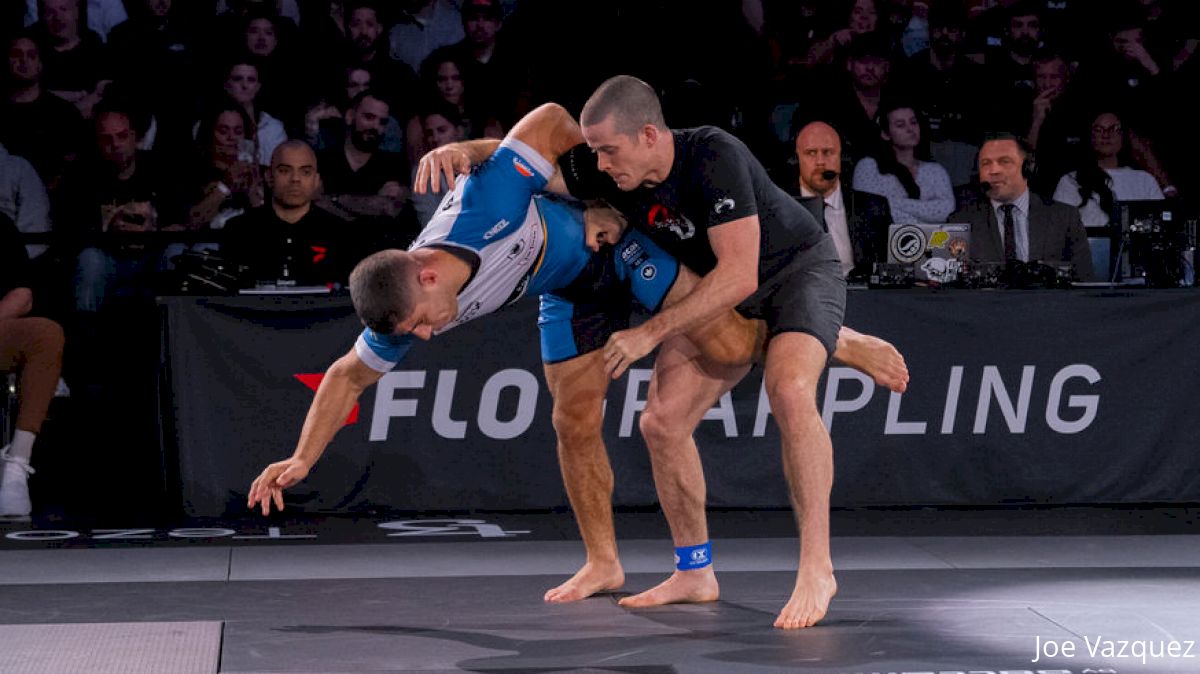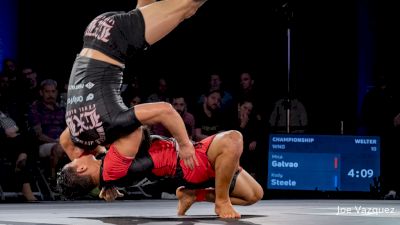Technical Trends To Watch After WNO 21
Technical Trends To Watch After WNO 21
We took a look at some of the most interesting technical notes from a wild night of grappling at Tezos WNO 21: Marinho vs Lovato

Who's Number One is the premier submission grappling series in the World, and with tons of athletes on the cutting edge of the sport there is a lot of technical information to glean from the matches. We saw three championship matches, tons of ranked contests, and some really interesting exchanges.
The one thing holding back this kind of evaluation is the small sample size - only 11 matches for us to consider. Still, given the high level of grappling we took away the following trends or concepts that really stood out.
'The Mica Throw' Is Here To Stay
Wrestling would call it a head pinch or chest wrap. Judo would call it a tawara gaeshi. In submission grappling, we may be calling it the Mica Throw. His front headlock toss has started to become a signature for the WNO Champion Mica Galvao. By locking around the shoulders, walking his hips into their center of gravity, and compressing the chin into the chest, he creates pressure that forces an opponent up and over in a high amplitude move.

What was especially interesting here was what happened next. Last WNO, Mica used this on JayRod and had both arms locked up and transitioned into simple top position. Here against Kody, he had one arm and the head locked up which then transitioned into a mounted arm-in guillotine that nearly finished. To be able to get the move to work against a wrestler as talented as Kody AND land directly in a mounted submission attempt is something that all grapplers should take note of.
Don't Just Enter Legs, Start Breaking
This really applies to two matches on the card, both the 145lb title match and Griffith vs Souza. Leg locks, like any submission, could be separated into two phases: entering and breaking. You enter into the submission by getting to your preferred position to apply the lock, then start breaking by applying the proper forces to strangle someone or attack a joint.
With leg locks especially, there is a disconnect with some athletes between those two phases. Among the best leg lockers, it becomes the same uninterrupted task. A great example of this is Diego Pato, the moment he has the chance to enter legs there is extreme tension running through the position. His attacks come quickly, and violently. There's a reason that he is one of the most feared leg lockers in the game and that's because of his speed to the breaking phase.
Leg Locking Is A Two Way Street
We saw the opposite of that when Luke Griffith took on Roosevelt earlier in the night. Roosevelt was the one who entered into the legs, securing a 50/50 where he could attack the inside heel hook. The issue? He didn't start digging for the heel or actually locking up any submission attempt. Instead, Luke was the one who was first to the submission and got the tap.

This also highlights another issue with leg locks. When you are entering into leg locking positions, you can almost always be counter leg locked with only a few steps - especially from 50/50. The theme remains the same; once you enter the legs, waste no time.
Top Position Matters
We saw two matches at WNO that were contested almost entirely on the feet, both the main event Pedro Marinho x Rafael Lovato Jr and Giancarlo Bodoni x Lucas Barbosa. While that doesn't always create the most action on the mats, it still shows an interesting truth - top position matters SO much in no-gi, especially at the higher weights, that they were unwilling to change their game plans despite not being able to impose their takedowns.
To be on bottom in no-gi, especially in the higher weights, you often do have to be carrying an opponent's weight as you try to destabilize and move them into leg entries, wrestle ups, or more. If you aren't confident you can do that, then that slow, grinding pressure of the top man can wear on an athlete. Once they are worn down, they are vulnerable to passes, back takes, and even submission attempts.
In this way, the pressure of a grappler works to keep the bottom player controlled similar to how an MMA may use punches to damage them. For the best big men, this is still a sport of get on top and then stay on top and we see the strategies to compliment that. Look at the example of Gordon Ryan, who has the best guard of any heavyweight, but now spends much more time simply refusing to play on bottom because of the potential disadvantages of it as a combat position.
The Hip Toss Is An Ideal No-Gi Takedown
We are seeing the neutral strategies of no-gi grappling continue to evolve the last few years as there is more focus on improving technique and the overall skill level. We saw several matches at WNO where the overhook hip toss came into play, including the first match of the night Mataya vs Butler and Tainan Dalpra vs Troy Russell.
The submission grappling posture is more straight up than wrestling because of the greater need to protect the neck, lack of gripping shoes, and longer matches. With that in mind, many judo techniques that can be applied without the gi become very valuable - especially hip tosses like the uchi mata or harai goshi.
The sequence tends to work as a defensive counter takedown. When you defend the shot and pull the opponent up, you end up with a strong overhook and a standing opponent - a great recipe to step in with the hip for a powerful toss. As takedown attempts become more common, these counter throws are only going to become more valuable for athletes at every level.